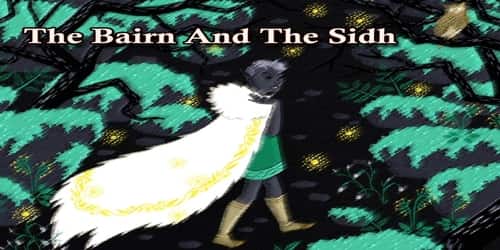The widely held belief has been that Einstein’s theory of gravity must be modified, or “quantized,” in order to fit within quantum theory. String theory and loop quantum gravity, two leading candidates for a quantum theory of gravity, take this approach. However, a new theory challenges that consensus and suggests that spacetime may be classical – that is, not governed by quantum theory at all.
Two papers published today by UCL (University College London) physicists announce a radical theory that consistently unifies gravity and quantum mechanics while preserving Einstein’s classical concept of spacetime.
Modern physics is built on two pillars: quantum theory, which governs the universe’s smallest particles, and Einstein’s theory of general relativity, which explains gravity through the bending of spacetime. However, these two theories contradict each other, and a resolution has remained elusive for over a century.
The widely held belief has been that Einstein’s theory of gravity must be modified, or “quantized,” to fit within quantum theory. String theory and loop quantum gravity, two leading candidates for a quantum theory of gravity, take this approach.
But a new theory, developed by Professor Jonathan Oppenheim (UCL Physics & Astronomy) and laid out in a new paper in Physical Review X (PRX), challenges that consensus and takes an alternative approach by suggesting that spacetime may be classical – that is, not governed by quantum theory at all.
Quantum theory and Einstein’s theory of general relativity are mathematically incompatible with each other, so it’s important to understand how this contradiction is resolved. It’s anyone’s guess now that we have a consistent fundamental theory in which spacetime is not quantized.
Professor Oppenheim
Rather than modifying spacetime, the theory – dubbed a “postquantum theory of classical gravity” – modifies quantum theory and predicts an intrinsic breakdown in predictability mediated by spacetime itself. This causes random and violent fluctuations in spacetime that are larger than predicted by quantum theory, making the apparent weight of objects unpredictable if precisely measured.
A second paper, published concurrently in Nature Communications and led by Professor Oppenheim’s former Ph.D. students, examines some of the theory’s implications and proposes an experiment to test it: measuring a mass very precisely to see if its weight appears to fluctuate over time.
For example, the International Bureau of Weights and Measures in France weighs a 1kg mass that used to be the 1kg standard on a regular basis. The theory can be ruled out if the fluctuations in measurements of this 1kg mass are less than those required for mathematical consistency.
The experiment’s outcome, or other evidence emerging that would confirm the quantum vs. classical nature of spacetime, is the subject of a 5000:1 odds bet between Professor Oppenheim, Professor Carlo Rovelli, and Dr Geoff Penington – leading proponents of quantum loop gravity and string theory, respectively. The UCL research group has been stress-testing the theory and investigating its implications for the past five years.

“Quantum theory and Einstein’s theory of general relativity are mathematically incompatible with each other,” said Professor Oppenheim, “so it’s important to understand how this contradiction is resolved.” Should spacetime be quantized, or should quantum theory be modified, or is it something else entirely? It’s anyone’s guess now that we have a consistent fundamental theory in which spacetime is not quantized.”
“This discovery challenges our understanding of the fundamental nature of gravity but also offers avenues to probe its potential quantum nature,” said co-author Zach Weller-Davies, a Ph.D. student at UCL who helped develop the experimental proposal and made key contributions to the theory itself.
“We have shown that if spacetime doesn’t have a quantum nature, then there must be random fluctuations in the curvature of spacetime which have a particular signature that can be verified experimentally.
“In both quantum gravity and classical gravity, spacetime must be undergoing violent and random fluctuations all around us, but on a scale which we haven’t yet been able to detect. But if spacetime is classical, the fluctuations have to be larger than a certain scale, and this scale can be determined by another experiment where we test how long we can put a heavy atom in superposition* of being in two different locations.”
Dr. Carlo Sparaciari and Dr. Barbara Oda, co-authors whose analytical and numerical calculations aided in the project’s direction, expressed hope that these experiments would determine whether pursuing a quantum theory of gravity is the right approach.
“Because gravity is manifested through the bending of space and time, we can think of the question in terms of whether the rate at which time flows has a quantum nature or a classical nature,” said Dr. oda (formerly UCL Physics & Astronomy, now at the Perimeter Institute of Theoretical Physics, Canada). And determining this is almost as simple as determining whether a mass’s weight is constant or appears to fluctuate in a particular way.”
Dr Sparaciari (UCL Physics & Astronomy) said: “While the experimental concept is simple, the weighing of the object needs to be carried out with extreme precision. But what I find exciting is that starting from very general assumptions, we can prove a clear relationship between two measurable quantities — the scale of the spacetime fluctuations, and how long objects like atoms or apples can be put in a quantum superposition of two different locations. We can then determine these two quantities experimentally.”
“A delicate interplay must exist if quantum particles such as atoms can bend classical spacetime,” Weller-Davies added. There must be a fundamental trade-off between the wave nature of atoms and the size of random fluctuations in spacetime. The proposal to test whether spacetime is classical by looking for random fluctuations in mass is complementary to another experimental proposal to verify the quantum nature of spacetime by looking for “gravitationally mediated entanglement.”
Professor Sougato Bose (UCL Physics & Astronomy), who was not involved with the announcement today, but was among those to first propose the entanglement experiment, said: “Experiments to test the nature of spacetime will take a large-scale effort, but they’re of huge importance from the perspective of understanding the fundamental laws of nature. I believe these experiments are within reach – these things are difficult to predict, but perhaps we’ll know the answer within the next 20 years.”
Beyond gravity, the postquantum theory has implications. Because quantum superpositions must localize due to their interaction with classical spacetime, the infamous and problematic “measurement postulate” of quantum theory is unnecessary.
Professor Oppenheim’s attempt to solve the black hole information problem inspired the theory. Standard quantum theory states that an object entering a black hole should be radiated back out in some way because information cannot be destroyed, but this contradicts general relativity, which states that you can never know about objects that cross the black hole’s event horizon. Because of a fundamental breakdown in predictability, the new theory allows for the destruction of information.
* Background information
Background on quantum mechanics: All matter in the universe obeys the laws of quantum theory, but we only see quantum behavior at the atomic and molecular scales. According to quantum theory, particles follow Heisenberg’s uncertainty principle, and we can never know their position and velocity at the same time. In fact, they have no fixed position or velocity until we measure them. Particles such as electrons can behave more like waves and appear to be in multiple locations at the same time (physicists refer to particles as being in a “superposition” of different locations).
Everything from semiconductors, which are ubiquitous in computer chips, to lasers, superconductivity, and radioactive decay is governed by quantum theory. A system, on the other hand, is said to behave classically if it has definite underlying properties. A cat appears to behave classically: it is either dead or alive, not both, nor in a state of being both. Why do cats behave classically while small particles behave quantumically? We don’t know, but the measurement postulate isn’t required by postquantum theory because the classicality of spacetime infects quantum systems and causes them to localize.
















